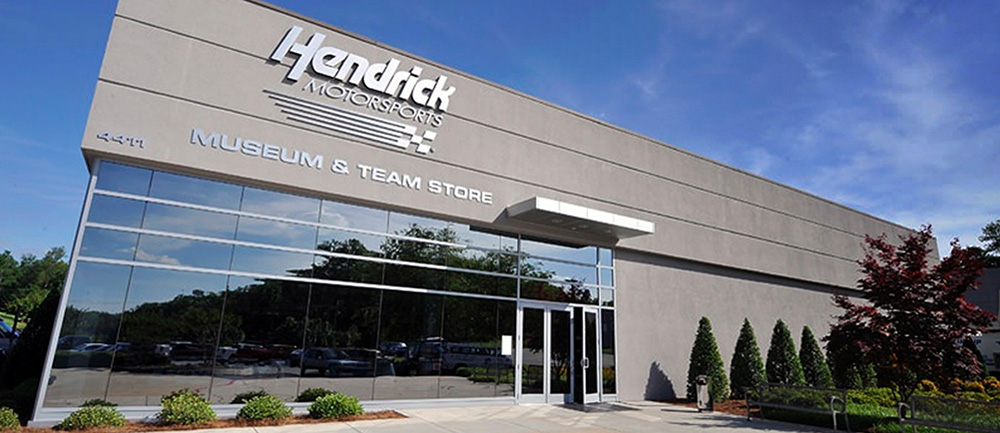
Fuel mileage strategy: risk versus reward
BROOKLYN, Mich. (Aug. 16, 2009) – At one time or another, we’ve all gambled with our car’s fuel mileage.
You know your car will give you 300 miles on a tank of gas. But when the light comes on and the trip meter reads mile No. 298, would you dare drive past that gas station on the corner?
“We do that every weekend,” said John Boydston, engine tuner for the No. 48 Lowe’s Chevrolet. “Riding around with a half-gallon of gas in the tank is normal for us. We’re comfortable in that position.”
While it seems like a precarious place to be, Boydston and his fellow race engineers at Hendrick Motorsports take comfort in their fuel mileage calculations. Fuel mileage is a major part of race strategy, particularly at a two-mile oval like Michigan International Speedway that features plenty of green-flag racing.
During this weekend’s NASCAR Sprint Cup Series event at Michigan, fuel mileage engineers will take into account a host of variables -- the amount of fuel in the Chevrolet, the amount of pressure the driver is putting on the gas pedal, the weather conditions and so on -- and develop a hypothesis on how far their cars can go.
Hendrick Motorsports has won the fuel mileage gamble twice in the last four events at Michigan. Dale Earnhardt Jr. held on to take the checkered flag on June 15, 2008, while Mark Martin most recently went to Victory Lane in June.
Martin’s race engineer Chris Heroy calculated the No. 5 Chevy could reach the start-finish line if Martin slowed down and patiently worked his way around the course. From his spot in the pit box, Heroy trusted Martin, who was running third at the time, would run a slower pace. Martin outlasted leaders Jimmie Johnson and Greg Biffle to win, but Heroy soon discovered that Martin had mashed the accelerator a bit harder than Heroy had figured.
“I was about a quarter (lap) off at Michigan,” Heroy said. “We were supposed to make it, and we ran out in (Turn) 4. I mean, I’ll take it. But when he said, ‘I’m out,’ I stood up and was like, ‘Uh oh. Come on. Come on.’ Luckily, we had built enough of a lead on Jeff (Gordon) that we were able to win it.”
The driver’s pace is key, but also the biggest variable. The engineers prepare for each event by tuning the carburetor at the shop and reviewing historical data. At the racetrack, they monitor the practice sessions to see how much fuel their Chevy, which typically burns 4.5 miles per gallon, is using. When the race starts, they know a better handling car requires less fuel, and they can determine within a tenth of a gallon how much fuel the gas man dumped into the car during a pit stop. The only factor the engineers cannot predict with a degree of accuracy is how much the driver is on the accelerator.
“You know you’re going to be tight on fuel so you ask them to do whatever they can to save fuel,” said engineer Tom Stewart, who helped guide Earnhardt to the July 15, 2008, win at Michigan. “Normally when it’s a fuel-mileage race, it’s a gamble because you know you’re going to be close. You hope that your calculations are right, and you’re going to be able to make it to the end.”
“It’s the sickest feeling you can have when that thing’s coasting around,” added H.A. Mergen (pictured), race engineer who works with Stewart on the No. 88 Chevy’s fuel mileage.
But while it’s nerve-racking, it’s also the ultimate test for engineers. Greg Ives, who has computed fuel mileage for four years with the No. 48 team, looks forward to the challenge each weekend.
“We conservatively gamble every time we go out on the racetrack,” Ives said. “We don’t leave much out there. Our goal is to win races no matter how we do it, and I think we’re the best at doing it. Calculating fuel mileage is one of the best parts of my job, and I like knowing that most of the time -- 90 percent of the time -- I’m correct when we’re going to run out of gas. You obviously have those unknowns where you’re going to stump your toe and you’re not right, but that’s where you learn.”
The engineers will get another learning experience when they head to Michigan. Race coverage for the 400-mile event begins Sunday at 1 p.m. ET on ESPN. The green flag is scheduled to drop at 2 p.m.







